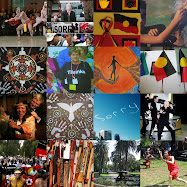
Jacaranda season once more in Sydney. Every year I feature a different tree. This one is in the car park of my local fruit market.




 "Unfortunately this was Searle's last race, as he contracted Typhoid on the sea voyage home and despite his excellent general health and fitness, he died in Melbourne on December 10. He was aged only 23.
"Unfortunately this was Searle's last race, as he contracted Typhoid on the sea voyage home and despite his excellent general health and fitness, he died in Melbourne on December 10. He was aged only 23.
 When it opened in 1901, Woolwich Dock was the largest in Australia.
When it opened in 1901, Woolwich Dock was the largest in Australia.









 Did you know that the author of the Mary Poppins books, P.L.Travers was born in Australia. Born Helen Lyndon Goff (she later changed her name to Pamela, as a stage name, and Travers was her father's first name), in Maryborough, Queensland, she lived with her sisters and mother in a house overlooking Ashfield Park between 1918 and 1924. She then went to Engalnd, where she lived, along with the US and Ireland, until her death in 1996. She tended to hide her Australian origins, and only returned once, for two weeks in 1966. She reportedly said she didn't think it was "my place."
Did you know that the author of the Mary Poppins books, P.L.Travers was born in Australia. Born Helen Lyndon Goff (she later changed her name to Pamela, as a stage name, and Travers was her father's first name), in Maryborough, Queensland, she lived with her sisters and mother in a house overlooking Ashfield Park between 1918 and 1924. She then went to Engalnd, where she lived, along with the US and Ireland, until her death in 1996. She tended to hide her Australian origins, and only returned once, for two weeks in 1966. She reportedly said she didn't think it was "my place."

 This monument in Ashfield Park is an intriguing one. On December 17, 1999, UNESCO declared February 21st to be International Mother Langauge Day. day is celebrated to promote mother tongues and encourage linguistic diversity and multilingual education.
This monument in Ashfield Park is an intriguing one. On December 17, 1999, UNESCO declared February 21st to be International Mother Langauge Day. day is celebrated to promote mother tongues and encourage linguistic diversity and multilingual education.







 Here's the bottlebrush I can see from my kitchen. It's in full bloom through October and November.
Here's the bottlebrush I can see from my kitchen. It's in full bloom through October and November.
